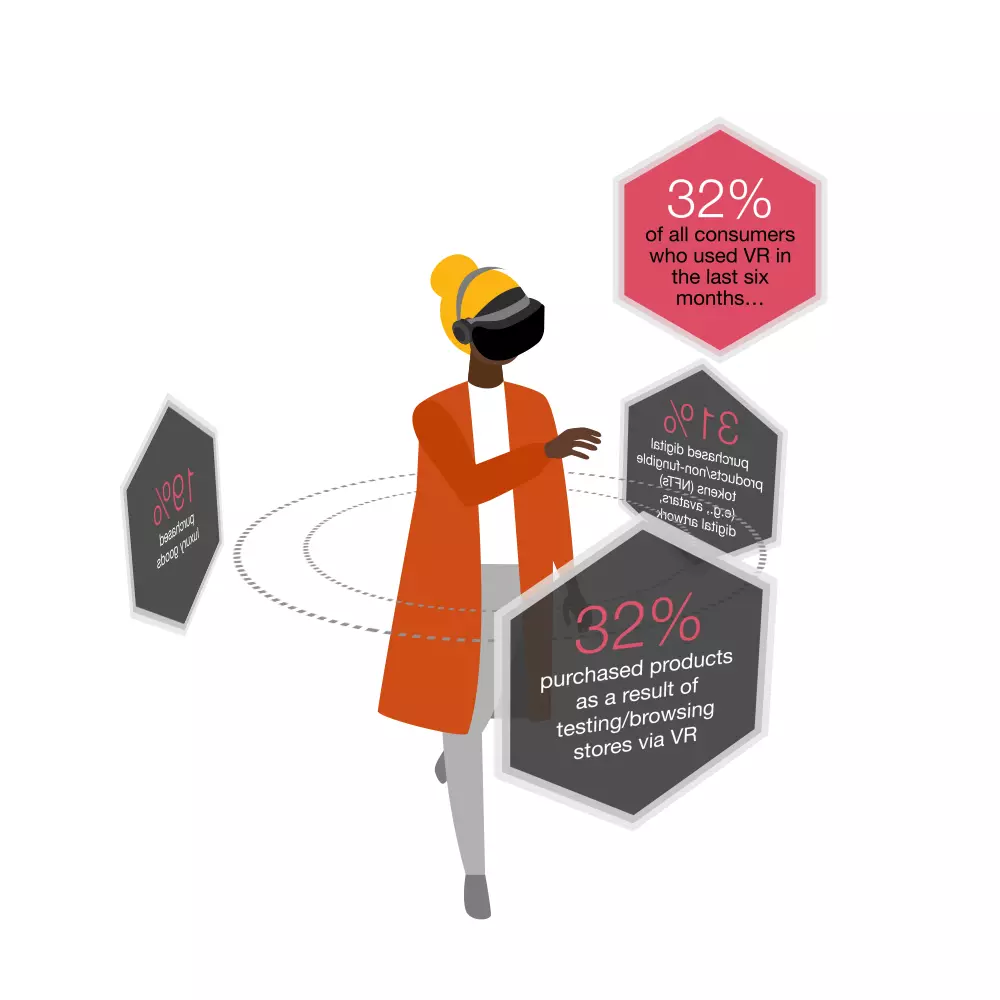Consumers face similar obstacles to shopping—both online and in stores
Consumer expectations are shifting as inflation, supply chain issues, ESG awareness and activism, and a possible recession affect availability, competition and values.
Although our survey wasn’t focused on inflation, it’s clear that consumers are aware of it, particularly in groceries. Longer queues in store, longer delivery times for orders from online stores and the unavailability of products have consumers facing similar issues in every shopping channel.
Which of these issues is having the greatest impact on you when shopping?
(Showing answers only from respondents answering ‘occasionally’, ‘frequently’ or ‘almost always’)
In a physical store
(% rank 1-3)
Rising prices for groceries
Unable to purchase a product due to it being out of stock
A product taking longer to be delivered than you were told at time of purchase
While shopping online
(% rank 1-3)
Rising prices for groceries
Unable to purchase a product due to it being out of stock
A product taking longer to be delivered than you were told at time of purchase
| Vietnam | Global | Australia | Brazil | Canada | China | Egypt | France | Germany | Hong Kong, SAR | India | Indonesia | Ireland | Japan | Malaysia | Mexico | Philippines | Qatar | Saudi Arabia | Singapore | South Africa | South Korea | Spain | Thailand | United Arab Emirates | United States | |
|---|---|---|---|---|---|---|---|---|---|---|---|---|---|---|---|---|---|---|---|---|---|---|---|---|---|---|
| Rising prices for groceries | 66%,59% | 65%,56% | 60%,44% | 71%,67% | 76%,59% | 43%,41% | 67%,60% | 61%,54% | 68%,58% | 59%,52% | 52%,51% | 56%,47% | 75%,56% | 76%,62% | 67%,60% | 65%,56% | 68%,55% | 54%,59% | 58%,54% | 57%,57% | 76%,62% | 65%,64% | 69%,57% | 57%,54% | 48%,48% | 73%,60% |
| Unable to purchase a product due to it being out of stock | 38%,31% | 37%,43% | 55%,52% | 25%,30% | 46%,47% | 26%,35% | 24%,35% | 34%,47% | 40%,40% | 49%,49% | 31%,44% | 41%,44% | 46%,51% | 44%,50% | 42%,44% | 30%,39% | 29%,38% | 35%,39% | 30%,38% | 36%,47% | 35%,51% | 30%,39% | 34%,35% | 33%,34% | 29%,38% | 56%,58% |
| A product taking longer to be delivered than you were told at time of purchase | 24%,48% | 20%,42% | 18%,49% | 22%,44% | 16%,44% | 30%,46% | 22%,43% | 25%,40% | 15%,38% | 20%,44% | 24%,39% | 20%,44% | 16%,45% | 15%,31% | 19%,45% | 16%,41% | 21%,51% | 23%,44% | 28%,41% | 17%,41% | 15%,38% | 28%,44% | 16%,39% | 24%,42% | 25%,43% | 20%,40% |

















